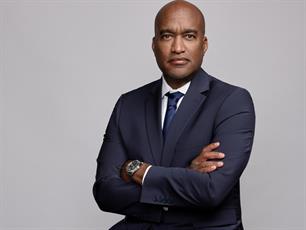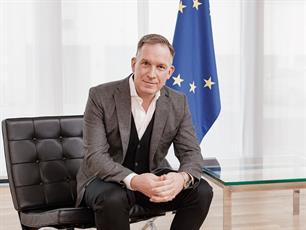Paul Holmes 19 Apr 2001 // 11:00PM GMT
In May 2000, Crayola, one of America’s best-known brands trusted by millions of parents and teachers, found the safety of its crayons called into question by a Seattle newspaper. The sudden and unexpected attack alleged that the talc used to strengthen Crayola crayons and three other brands contained asbestos. Print and broadcast media throughout the United States quickly amplified the attack against crayons, launched by an investigative reporter from the Seattle Post-Intelligencer. Back-to-school, the largest retail selling season for Crayola crayons, was at stake. Under intense pressure, a cross-functional crisis management team, lead by Binney & Smith’s Corporate Communications group, investigated the allegation and developed and implemented an effective crisis management strategy. Simultaneously, immediate, flexible and ongoing communication to all key audiences was launched to protect Crayola brand equity as the crisis unfolded. As a result, a major national product crisis was mitigated in less than a month and the reputation of a brand beloved for nearly a century was protected.
CHALLENGE
Crayola is a trusted brand that has played a role in the lives and development of five generations of Americans. With 98 percent-unaided brand awareness among consumers, Crayola is a highly visible brand found in virtually every home and classroom in the U.S. The brand is associated with children’s creative expression, quality, safety, child development and fun.
On Tuesday May 23, 2000, the Seattle Post-Intelligencer published the first in a series of stories alleging that asbestos fibers were present in talc used in Crayola crayons, as well as those of two smaller manufacturers. The initial report quoted scientific and medical experts who believed the fibers posed a potential health risk to children. The allegation was picked up by the Associated Press, published in newspapers throughout the country, and broadcast nationally and locally on television and radio. The Consumer Product Safety Commission (CPSC) became involved, promising an evaluation.
The challenge was to quickly investigate the validity of the allegations, while simultaneously preserving consumer trust and brand equity put at risk by highly visible media reports, nationwide. Increasing this challenge were test results from news organizations and school districts that contradicted Binney & Smith’s findings that our crayons did not contain asbestos and disagreement over measurement standards for asbestos or “asbestos-like” fibers. An aggressive crisis communications effort was launched to reinforce the brand’s commitment to children’s safety with a promise to make changes if evidence indicated the need to do so.
RESEARCH, PLANNING, AND OBJECTIVES
Binney & Smith, maker of Crayola crayons, learned of the impending story in a phone call from the Seattle-Post Intelligencer less than two business days before publication. Lexis-Nexis research into reporter Andrew Schneider (enclosure 1) showed he was a veteran journalist with two Pulitzer prizes and experience writing on health issues in general and asbestos in particular. His reports were sometimes picked up nationally. Binney & Smith immediately began to mobilize its communications resources. Online media research tools and the Internet were used throughout the crisis to track and monitor media coverage and identify scientific and medical experts to offer up as sources. On-going consumer research was also conducted to gauge awareness levels of the crayon safety issue and the levels of concern.
Led by Corporate Communication, a cross functional team was assembled, including scientists, management, consumer affairs specialists, product quality and safety officials. The company brought in former investigative journalist Mike Lawrence to assist in-house Corporate Communications staff. Lawrence, EVP of Media Services at Cone, Inc., led research, located and interviewed experts, and worked with in-house staff on strategy and media training of spokespeople as the crisis unfolded.
Identified objectives were:
- Protect existing public trust and confidence in the Crayola brand during a time of uncertainty
- Fact-find in an effort to clarify whether there was indeed a health concern
- Create a climate that would facilitate corrective action if facts showed such action was warranted
- Stay ahead of media coverage and resolve the crisis quickly to mitigate risk to back-to-school sales
- Seek a solution that would prevent allegations from lingering and eroding brand equity
STRATEGIC APPROACH
Our initial plan was to learn all we could about the issue itself while communicating quickly and proactively to key audiences including consumers and parents, school teachers and administrators, retailers and distributors, employees, and the news media. Communication strategy was to accept responsibility for getting to the bottom of the issue, to reinforce Crayola's commitment to safety, and to promise to act quickly if the facts showed action was necessary. Given the highly dispersed nature of some key audiences, a continual “visibility and voice” in media coverage was seen as critical. The U.S. Consumer Product Safety Commission was quickly identified as an important force. Top management met with the CPSC chairwoman to discuss options and reinforce our desire to work with the Commission on a solution both understood by consumers and acceptable to Binney & Smith. This relationship proved important in the eventual resolution of the crisis, as the Commission credibly allayed any consumer concerns.
CAMPAIGN EXECUTION
Binney & Smith immediately initiated independent laboratory testing as a concerned, committed but flexible on-the-record response was given for the SPI story. On the day that story broke, a news release and video news release highlighting Binney & Smith’s response were made available to media nationwide. On this same day, a special "Crayon Safety" section was added to the Crayola.com Web site for access by the public and news media. Informational messages were written for employees and distributed through the company Intranet, bulletin boards, voicemail, and in-person meetings. Similar information was provided for Consumer Affairs Center staff. Within the first two days, informational letters were sent to key retail store and education accounts, and talking points given to Binney & Smith’s sales force.
While awaiting test results, plans were developed to take any product-related action that might be necessary. The crisis team continued detailed research into the asbestos fiber issue, using government and science Web sites and publications on the Internet, as well as telephone interviews with experts, including Mike Beard, a retired EPA asbestos official and chairman of a standards setting group for asbestos laboratory testing. This research showed disagreement among scientists about what standards to use to identify asbestos in lab testing, as well as disagreement over which fibers should be covered under government asbestos regulations. It became evident that regardless of additional research we might do, or experts it might have identified, the asbestos issue could not be put to rest in consumers’ minds. The CPSC would play a key role in explaining and clarifying the issue and putting it in context for consumers.
Three days after the SPI story, the independent lab retained by Binney & Smith reported finding no asbestos fibers. These results were communicated to the media via a news release and a second VNR, which included reaction sound bites from former EPA official Mike Beard. Expert reaction was posted on the special “safety” pages of the Crayola Web site. Updates for employees were posted on the company Intranet, and information sent to retail store customers and education distributors and to the CPSC, which had begun its own testing. Small group meetings were held with manufacturing employees, to keep them fully apprised of developments. Close tracking of news media and Internet response was maintained.
While awaiting the CPSC’s findings, extensive media training sessions were conducted with CEO Mark Schwab. These sessions included issues raised in ongoing news coverage. They were instrumental in influencing strategic decisions by keeping media and public perceptions “front and center.”
Within two weeks, CPSC test results released showed no cause for concern and the agency said children should continue using crayons and parents and teachers should continue purchasing them from stores. However, to eliminate consumer confusion, Binney & Smith volunteered to phase out the use of talc, and reformulate with an alternate ingredient to strengthen crayons within a year. Both the CPSC and Crayola issued news releases. CPSC Chairwoman Ann Brown announced the agreement live on NBC’s “Today Show”. Immediately after that interview, Binney & Smith released a third VNR. Again, the Crayola safety Web site and internal vehicles were used to update stakeholders. Media monitoring over the next two days showed that the CPSC’s comments and Binney & Smith’s voluntary decision to reformulate had quickly put the issue to rest.
EVALUATION AND RESULTS
From May 23-June 13, news coverage of the crayon asbestos crisis generated more than 900 million gross media impressions, including more than 1,400 television reports (54 national) and massive newspaper and Internet coverage. Binney & Smith’s Consumer Affairs Center received only 192 e-mail messages and only 2,021 calls on the 800-Crayola toll-free line. Despite the major media coverage, this is a far lower level of inquiry than the center has received for company-initiated campaigns. By comparison, the special “Crayon Safety” section on the Crayola.com Web site received more than 15,000 visits during this same period. We believe these statistics suggest consumers were getting the information and reassurance they needed through our statements, our Web site, and our media interactions. On-going, proactive communication with employees, especially with those who manufacture crayons, helped to strengthen their commitment to the company.
Public survey research showed the level of concern among consumers did not significantly increase over the three weeklong crisis, even as media coverage accumulated. While roughly a third of consumers had heard of an issue regarding crayons, only about 10% indicated concern. As of late September, the concerned percentage had declined to under 3%. Sales of Crayola crayons were not impacted and Back to School retail sales were strong. We believe that proactive research and management of the crisis, combined with aggressive external and internal communications, protected the high level of brand equity and consumer trust that the Crayola brand has earned for nearly a century.
One final piece of confirming evidence came to light in November 2000. Public opinion brand research conducted by a third party showed Crayola among the top 5 brands most respected by Americans.


































.jpg)




.tmb-135x100.jpg)












